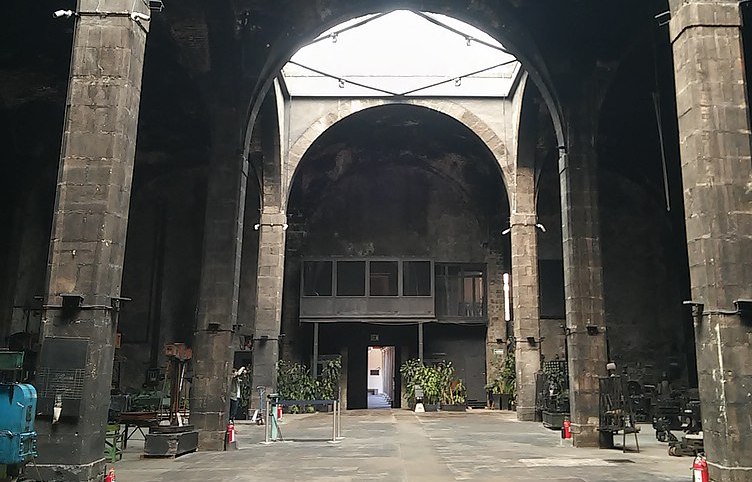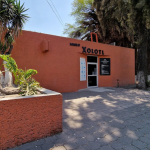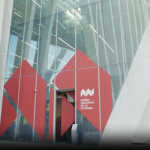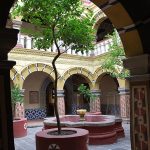
__
The Mexican National Numismatic Museum is housed in a fascinating 17th-century building. It was rebuilt on the orders of Antonio López de Santa Anna in 1842 and housed the Casa de Moneda, the National Mint, from 1848 until 1992.
The Casa del Apartado was the pre-industrial economic generator of the Spanish Empire. As something like the Wall Street of its day, it drew the greatest creators of its time. Thus, we have Pedro de Arrieta building the enormous Casa de Moneda Building, just off the Zócalo. Later, Neo-classical master, Manuel Tolsá completes a palace, just for the Marqués de Apartado. It’s still a palace by the highest standards of the time.
An apartador, though he had been a private contractor, was later appointed directly by the Spanish crown. His job was to oversee the process of extracting, refining, and minting precious metals, chiefly gold and silver. The crown would keep a strict monopoly on the process. Independent Mexico would later do the same thing. Much of the metal extracted in Mexico ended up in the Casa de Moneda to be minted into currency. This continued even after Mexico fought a ten year struggle against the Crown.
By 1842, then President Santa Anna ordered the renovation of the building. With the invasion by the United States, it was decided that the mint would be moved from next of the National Palace, would be moved back to the more distant Casa del Apartado. Later, President Porfirio Díaz ordered the same institituion to form a numismatic museum. These plans were interrupted by the Mexican Revolution. The 1986 “Law of the Mexican Mint” re-established responsibility for the institution.
At the time, the “industrial heritage” aspects of the museum were also integrated into the Museum’s mission. Today, the Museum integrates numismatics and industrial heritage.
The museum is home to much of the old machinery, only later adapted for electrical power. The museum also houses coins and medals from various historical periods, as well as tools, punches and dies. But people come for the interiors.
The National Numismatic Museum is a surprisingly attractive space, centuries on. None of the heat and clanging of metal is necessary today. It makes for a fascinating glimpse into an increasingly important aspect of Mexico’s colonial and 19th-century histories.
 (55) 5511 7700
(55) 5511 7700
 https://www.facebook.com/pages/Museo%20Numism%C3%A1tico%20Nacional/146715595746522/
https://www.facebook.com/pages/Museo%20Numism%C3%A1tico%20Nacional/146715595746522/

Nearest at 0.11 kms.

Nearest at 0.15 kms.

Nearest at 0.23 kms.

A spectacular little museum dedicated to the ancient Tenayuca ruins.

More than a wax museum, the Misterios collection is a thundering reverberation from the past . . .

A museum dedicated to the history of Mexican finance . . .

A museum dedicated to Mexico's long history of housing and living.

Not just the Museum of the Interventions and a fascinating military history, it's a fascinating monastery too.